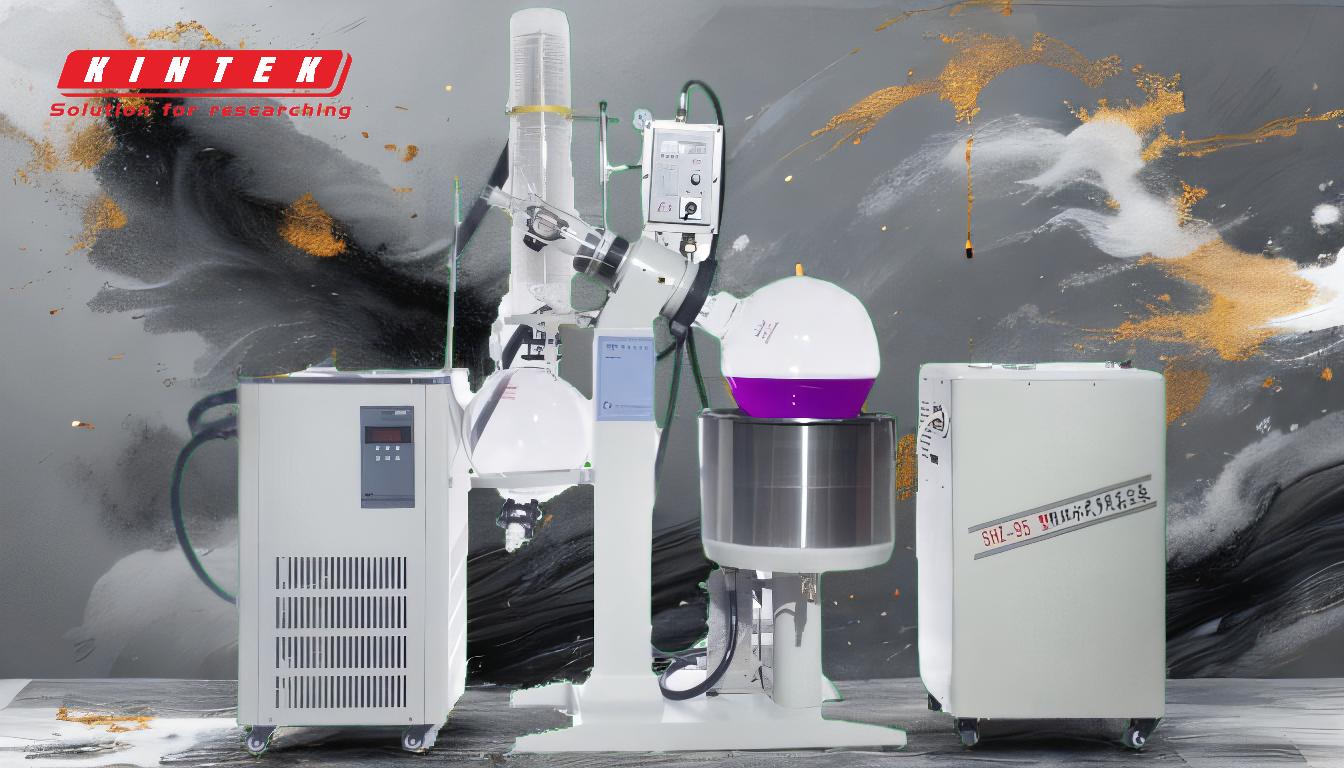A rotary evaporator is widely regarded as the best method for removing solvent from a sample due to its efficiency, speed, and ability to handle large volumes of solvent. By depositing a thin film of liquid on the flask's surface, it maximizes the surface area for evaporation, significantly speeding up the process. Additionally, the rotary evaporator operates under reduced pressure, allowing solvents to evaporate at lower temperatures, which minimizes the risk of sample decomposition. This method is also energy-efficient and prevents issues like bumping, ensuring a safer and more controlled evaporation process. These features make it an indispensable tool in laboratories for solvent removal, especially for low boiling point solvents.
Key Points Explained:

-
Increased Surface Area for Faster Evaporation
- The rotary evaporator rotates the flask, creating a thin film of the liquid on the inner surface.
- This thin film provides a large surface area, which accelerates the evaporation process.
- Compared to traditional methods, this significantly reduces the time required to remove solvents, often completing the process in minutes rather than hours.
-
Handling Large Volumes of Solvent
- Rotary evaporators are designed to handle large volumes of solvent efficiently.
- This makes them ideal for applications where significant amounts of solvent need to be removed, such as in industrial or research laboratories.
- The ability to process large volumes without compromising speed or efficiency is a key advantage over other methods.
-
Lower Operating Temperatures
- By operating under reduced pressure, rotary evaporators allow solvents to evaporate at lower temperatures.
- This is particularly beneficial for heat-sensitive samples, as it minimizes the risk of thermal decomposition or degradation.
- Lower temperatures also reduce energy consumption, making the process more cost-effective and environmentally friendly.
-
Prevention of Bumping
- Bumping, or sudden violent boiling, can lead to sample loss or contamination.
- The thin film created by the rotary evaporator helps prevent bumping by ensuring a more controlled and uniform evaporation process.
- This results in a safer and more reliable method for solvent removal.
-
Efficiency in Removing Residual Solvent
- Rotary evaporators are highly effective at removing even trace amounts of residual solvent.
- The combination of reduced pressure and increased surface area ensures thorough evaporation, leaving behind a concentrated sample.
- This is particularly important in applications where complete solvent removal is critical, such as in pharmaceutical or chemical synthesis.
-
Energy Efficiency
- Compared to boiling under atmospheric pressure, rotary evaporators use less energy.
- The reduced pressure lowers the boiling point of the solvent, requiring less heat input.
- This energy efficiency not only reduces operational costs but also aligns with sustainable laboratory practices.
-
Versatility for Low Boiling Point Solvents
- Rotary evaporators are especially effective for solvents with low boiling points.
- The ability to operate at lower temperatures and pressures makes them ideal for handling volatile solvents like ether, which can evaporate quickly and efficiently.
- This versatility makes rotary evaporators a preferred choice in many laboratory settings.
In summary, the rotary evaporator's combination of speed, efficiency, safety, and versatility makes it the best method for solvent removal in most laboratory applications. Its ability to handle large volumes, operate at lower temperatures, and prevent issues like bumping ensures reliable and consistent results, making it an essential tool for researchers and industry professionals alike.
Summary Table:
| Feature | Benefit |
|---|---|
| Increased Surface Area | Accelerates evaporation by creating a thin film, reducing processing time. |
| Handles Large Volumes | Efficiently removes large amounts of solvent without compromising speed. |
| Lower Operating Temperatures | Minimizes sample decomposition by evaporating solvents at reduced pressure. |
| Prevents Bumping | Ensures a controlled evaporation process, reducing sample loss. |
| Removes Residual Solvent | Effectively eliminates trace solvents, leaving a concentrated sample. |
| Energy Efficient | Reduces energy consumption and operational costs. |
| Versatile for Low BP Solvents | Ideal for volatile solvents like ether, ensuring quick and efficient removal. |
Upgrade your lab's solvent removal process with a rotary evaporator—contact us today to learn more!









